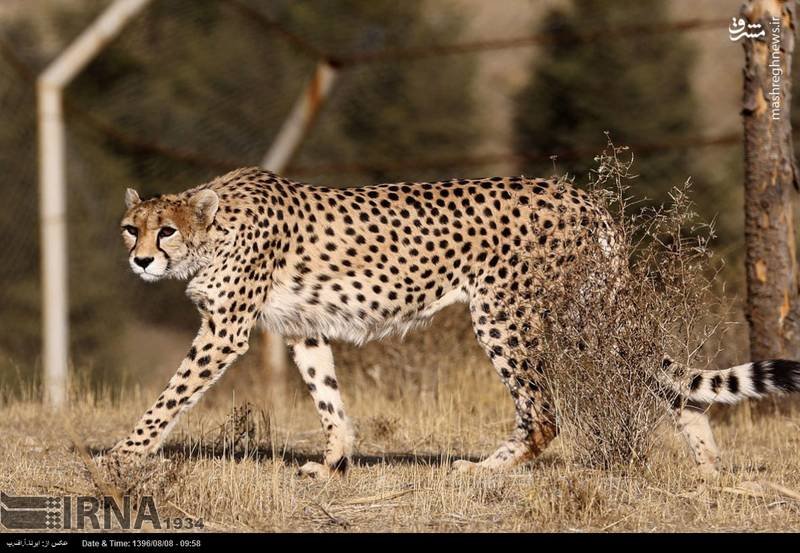Iran, UNDP prepare draft for Conservation of Asiatic Cheetah

TEHRAN — Iran’s Department of Environment (DOE) and United Nations Development Program (UNDP) have jointly drawn up the draft of the Conservation of Asiatic Cheetah Project (CACP) phase III.
Hamid Zohrabi, deputy environment chief for DOE’s natural environment and biodiversity directorate said on Saturday that the project will go into effect by the end of 2018.
According to UNDP, the cheetah project is about reversing the drastic decline of the endangered Asiatic cheetah and conserving it from extinction. It is now estimated that fewer than 50 Asiatic cheetahs are living in the wild in Iran.
The Asiatic cheetah mainly inhabits the desert areas around Dasht-e Kavir in the eastern half of Iran, including parts of the Kerman, Khorasan, Semnan, Yazd, Tehran, and Markazi provinces. Most live in five protected areas, Kavir National Park, Touran National Park, Bafq Protected Area, Dar-e Anjir Wildlife Refuge, and Naybandan Wildlife Reserve. The cheetah has been listed as critically endangered on the International Union for Conservation of Nature (IUCN) Red List since 1996.
The cheetah/livestock interactions and the presence of human beings and guard dogs in cheetah’s habitats, road accidents and habitat fragmentation are of the main threats making the cheetah’s future uncertain.
Phase I of the CACP was co-funded by the Global Environment Facility between 2001 and 2008.
Phase II implementation commenced in 2009. It aimed to assist the Department of the Environment to fulfill its commitments to the UN Convention on Biological Diversity under Iran’s Program of Work on Protected Areas (PA).
The ultimate goal was to achieve sustainability of protected areas and the Asiatic Cheetah population within them. The project built on the achievements of the CACP Phase I by strengthening the current protected area management in selected cheetah habitats.
In November 2017, Anne Marie Sloth Carlsen, UNDP Deputy Resident Representative in Iran announced that UNDP is not extending the project and that they believe Iran is capable of running the project single-handedly. She explained that due to the challenges UNDP is facing, they cannot continue funding the project and this does not only affect Cheetah Project.
However, Zohrabi has explained that the project, devised in collaboration between experts and volunteers to address the threats and come up with measures to protect the species, will be implemented for 5 more years.
“After final approval of the draft agreement the project will launch with financial support from Department of Environment and international entities,” Zohrabi highlighted.
“In the third phase of the project we will not only focus on protected areas supervised by DOE, but also cheetah’s migration corridors will be observed more closely.
“Moreover [the project] underscores the importance of local communities’ collaboration and the need to take their sustainable livelihood into consideration.
“Additionally better conservation plans for Asiatic cheetah conservation, and its prey by training the rangers, increasing the quality of captive breeding, raising public awareness, drawing up plans for alternative jobs for sustainable agriculture, livestock breeding and eco-tourism by soliciting public participation, and decreasing human-wildlife conflict are of the other objectives of the third phase of the project.”
Zohrabi finally explained that the third phase of the project will be financially assessed once the agreement is final.
MQ/MG
Leave a Comment